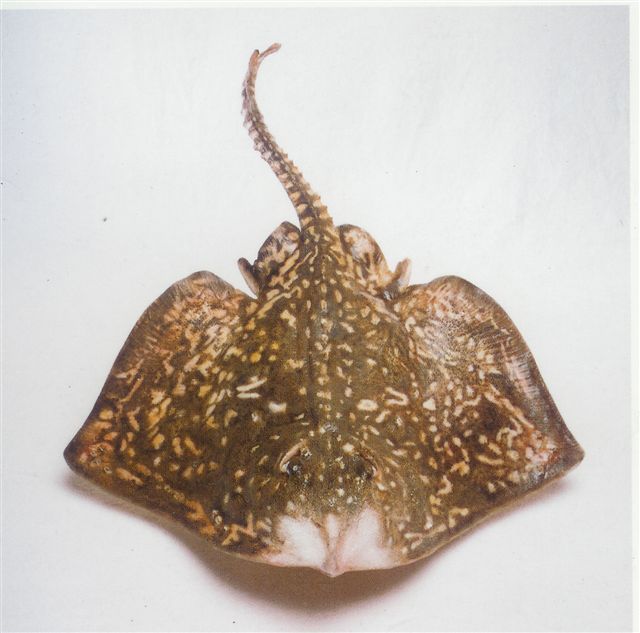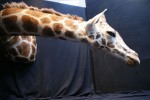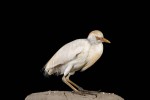The wrinkled hornbill lives in the south of Thailand, the Malay Peninsula and the Indonesian islands of Sumatra, Rupat, Payong, Batu and throughout the the island of Borneo.
In the adult male, the cap, the back of the neck, body and wings are black. The front and the back of the neck are white. The tail is white with a black suede base. Yellow beak is topped by a high pleated scarlet helmet whose base is cut by deep furrows. The bare skin around the eye appears blue. The expandable skin of the throat is pale yellow. The irises are red. Legs and feet are black.
It measures approximately 70cm and a weight of about 1,500 gr. The female is smaller than the male, the helmet has a less prominent ridge. Juveniles of both sexes are identical in plumage than the male. The helmet is virtually absent. Young females molt and acquire the black feathers on the face and on the front of the neck when they reached the age of one year.
It is a bird of primary evergreen forests of evergreen trees, it stays at low level and its distribution is very uneven. Like many other hornbills, it is a nomadic species, making numerous trips between their feeding grounds and places where it perches to rest, which makes the estimation of its workforce difficult.
They usually live in pairs or small groups. They are not aggressive and sometimes seem clumsy in flight. They have deep echoing cries. They have a fairly original way to eat, they gently grab their food, fruit or insect, by the end of the beak and toss like a room that is played with a coin before swallowing.
This hornbill is a monogamous bird. The marital relationship with its partner is long when it does not last a lifetime. Breeding season occurs during the rainy season in December and January. At that time the earth is soft and easily used to build walls to block the entry of nests. Like many of its relatives Asian cousins, it chose a woodpecker hole as fungi or molds have expanded. The layout of the nest is mainly the task of the female. It closes the input with mud and regurgitated food remains. Leaving only a small slit through which the male is responsible for refueling. This wall, built it with care, is supposed to protect against possible attack by predators such as monkeys and snakes.
The female lays an average laying of two eggs. After a month of incubation, the chicks break the shell. They are born naked, but they get fast enough a purplish plumage. This is when the female breaks the entrance wall, now sharing with the male responsibility of feeding the young.
They remain at the bottom of the cavity and not leave the nest after a period which varies from 65 and 73 days. The total duration of the nesting cycle takes about 4 months. During this period, the females are totally dependent on its partner. If it does not return, the female and the brood are lost and die of starvation.
They eat mainly small, soft seeds and fruits such as figs, frogs, lizards, snails, arthropods and young chicks. Animal matter constitutes about 30% of their diet. During the breeding season, the male regurgitates up to 150 figs to feed its female. These birds are not forced to drink because it is the source of any moisture in the food they eat.
In the wild, it is considered as a near threatened species.





